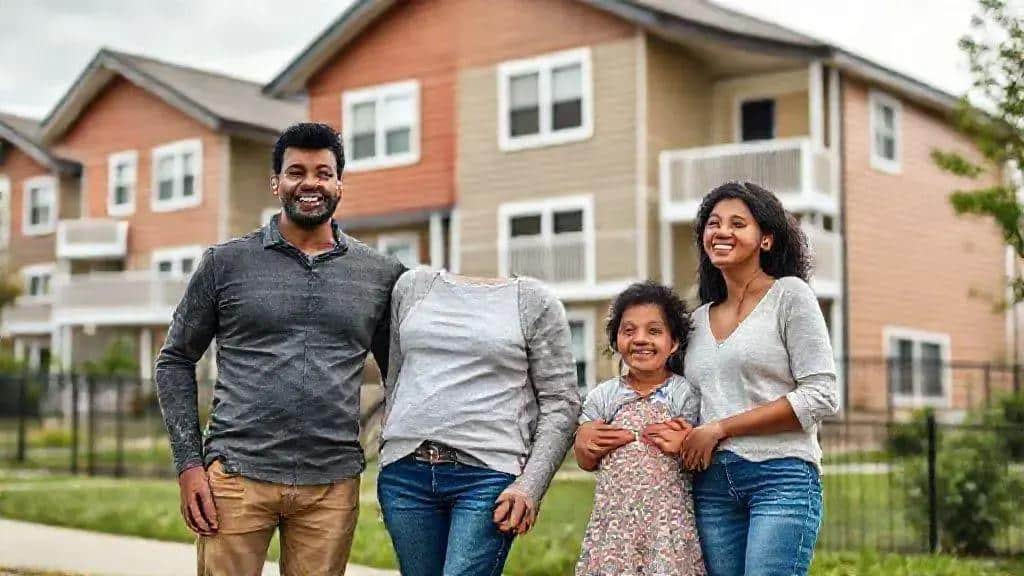Housing benefits and affordable housing initiatives explained

Housing benefits and affordable housing initiatives provide essential financial assistance to help low-income individuals and families secure safe, stable housing, significantly benefiting their communities by reducing homelessness and promoting engagement.
Housing benefits and affordable housing initiatives play a crucial role in ensuring everyone has access to safe and affordable living options. Have you wondered how these systems work and who they affect? Let’s dive in.
Understanding housing benefits
Understanding housing benefits is essential for anyone seeking assistance with their housing needs. These benefits can help individuals and families afford safe and stable housing.
There are various types of housing benefits available, each designed to assist different groups of people. The main goal is to alleviate the financial burden of housing costs and ensure access to quality living conditions.
Types of Housing Benefits
Different programs cater to diverse needs. Here are some of the most common types:
- Rental Assistance: Programs like Section 8 provide vouchers that help low-income families pay their rent.
- Public Housing: This involves government-owned properties that offer affordable housing options to qualifying residents.
- Subsidized Housing: Landlords receive financial assistance from the government to lower the rent for qualifying tenants.
- Emergency Housing Assistance: Provides short-term financial help for individuals facing homelessness or housing crises.
Applying for housing benefits can seem daunting, but knowing the steps can simplify the process. Gather necessary documents like income statements and identification. Then, find local housing authorities or agencies that administer these benefits.
It’s important to understand that not everyone qualifies for housing benefits. Eligibility often depends on income, family size, and local policies. Hence, researching local guidelines can be beneficial.
The Importance of Housing Benefits
Housing benefits not only support individual households but also contribute positively to the community. By providing stable housing options, these programs can reduce homelessness and improve the overall quality of life for many families.
Moreover, when individuals have secure housing, they are more likely to thrive economically and socially. This has lasting effects on education and job prospects, leading to stronger communities over time.
Types of affordable housing initiatives

There are several types of affordable housing initiatives designed to meet the needs of different communities. These initiatives aim to provide safe and stable housing options for low-income families and individuals.
Understanding these programs can help you find the right assistance. Below are some of the most common initiatives used to promote affordable housing.
Public Housing Programs
Public housing is government-owned rental housing that provides low-income families with affordable living options. Residents typically pay a portion of their income toward rent, making it a sustainable choice for many.
Housing Choice Vouchers
With programs like the Housing Choice Voucher (HCV) system, families can choose where to live in the private market. This flexibility allows them to find housing that meets their needs while receiving financial assistance.
Low-Income Housing Tax Credit (LIHTC)
The LIHTC program encourages developers to build affordable units by providing tax incentives. This initiative aims to increase the supply of affordable housing and support community development.
Community Development Block Grants (CDBG)
CDBG funds support various community projects, including affordable housing initiatives. Local governments can use these funds to rehabilitate existing homes or create new housing developments.
Another essential program is the Supportive Housing Initiative, which pairs affordable housing with services for various populations, such as the homeless and those with disabilities.
It’s critical to know how these various initiatives can help individuals and families access housing. Many communities offer resources to assist families in navigating these programs and finding the right fit for their needs.
Overall, understanding the types of affordable housing initiatives available can make a significant difference in creating a safe and stable living environment for many families.
Eligibility criteria for housing benefits
Eligibility criteria for housing benefits are essential for determining who can receive assistance. Understanding these criteria can help individuals and families navigate the application process effectively.
Typically, these criteria may vary depending on the specific program and local regulations. However, there are common factors that are often considered.
Income Limits
Most housing benefits programs have income limits that applicants must meet. These limits are set based on family size and the median income of the area. Generally, applicants must earn less than a certain percentage of the median income.
Residency Requirements
Applicants usually need to demonstrate residency within the area where they are seeking assistance. This may involve providing proof of address or having lived in the community for a specified period.
Family Size and Composition
The composition of the household is also an important factor. Many programs prioritize families with children, elderly individuals, or people with disabilities. Applicants may be asked to provide documentation about household members.
Citizenship Status
In most cases, eligibility for housing benefits is restricted to U.S. citizens and certain eligible non-citizens. This criterion ensures that benefits are provided to those who meet legal residency requirements.
Additionally, past behavior may play a role in determining eligibility. For example, individuals with a history of eviction from public housing or drug-related criminal activity may face restrictions in the application process.
It’s important for applicants to gather the required documents ahead of time. This typically includes proof of income, identification, and any other relevant information that supports their application. Understanding these eligibility criteria can significantly improve the chances of securing housing benefits.
Impact on local communities

The impact of housing benefits on local communities is significant and far-reaching. These programs not only assist individuals and families in securing stable housing, but they also promote overall community well-being.
When families receive housing benefits, they can afford better housing options. This stability allows them to focus on other important aspects of life, such as education and employment. As a result, children in stable homes tend to perform better in school, setting a positive trend for future generations.
Community Development
Affordable housing initiatives often lead to community development. When new affordable units are built, they can revitalize areas and attract businesses. This creates jobs and enhances local economies.
Reduction in Homelessness
By providing essential support, housing benefits help to reduce homelessness. When individuals have access to stable housing, they are less likely to experience crises that lead to homelessness. This reduction improves public health and safety in the community.
Strengthening Neighborhood Ties
When residents have secure housing, they are more likely to engage in their communities. Stronger neighborhood ties lead to better social support networks, enhancing community resilience.
Moreover, when individuals invest in their homes and communities, it fosters pride and responsibility. This can lead to increased participation in local events and initiatives, creating a sense of belonging.
Overall, the positive effects of housing benefits ripple through local communities, contributing to a stronger, healthier, and more connected population.
FAQ – Frequently Asked Questions about Housing Benefits and Affordable Housing Initiatives
What are housing benefits?
Housing benefits are financial assistance programs designed to help individuals and families afford safe and stable housing.
Who is eligible for housing benefits?
Eligibility for housing benefits typically depends on income, family size, residency, and sometimes citizenship status.
How do housing benefits impact local communities?
Housing benefits help reduce homelessness, promote community engagement, and improve the overall well-being of neighborhoods.
What types of housing benefits are available?
Common types of housing benefits include public housing programs, housing choice vouchers, and low-income housing tax credits.





